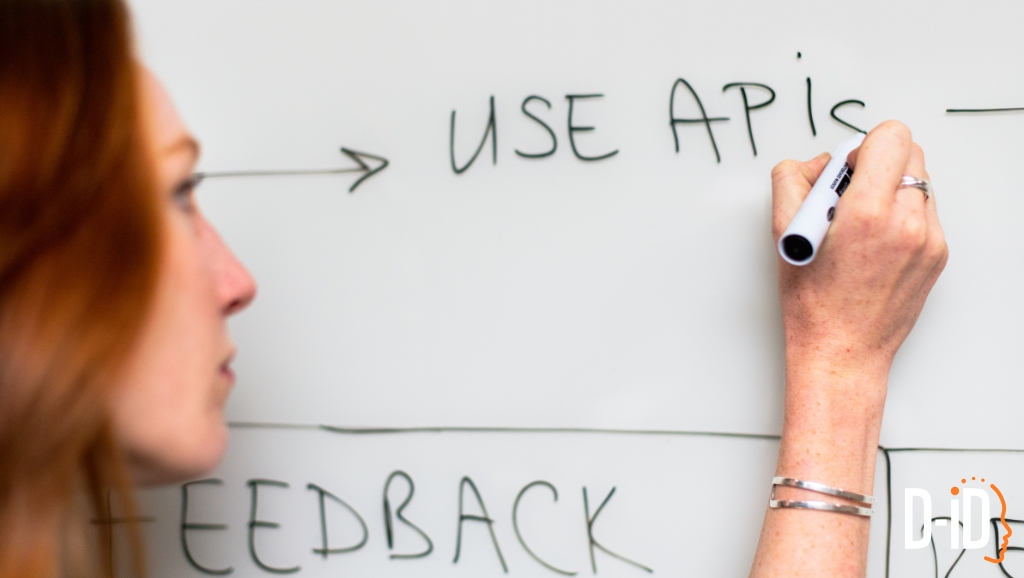Choosing the Right Conversational AI API for Your Needs

Whether you’re building a smart customer support assistant, a virtual shopping guide, or an AI tutor, the foundation of a great conversational experience starts with the right API. A conversational AI API enables your application to understand natural language, respond intelligently, and engage users across digital touchpoints. But with so many options available, how do you choose the one that fits your needs?
This guide breaks down what to look for, the most common use cases, and how to evaluate providers based on your goals and infrastructure. We’ll also show how D-ID’s visual avatars elevate API-powered interactions with a human-like touch.
Main Takeaways
- A good conversational AI API should support natural language understanding, be scalable, and offer easy integration
- Use cases include chatbots, voice assistants, customer support, and e-commerce
- Choosing the right solution depends on your use case, tech stack, and customer expectations
- Pairing APIs with visual AI avatars enhances engagement and trust
Key Features to Look for in a Conversational AI API
Not all APIs are created equal. The best conversational AI tools stand out through a combination of technical sophistication and developer-friendly design. When evaluating options, there are several core capabilities to keep in mind.
First, natural language processing (NLP) capabilities are critical. A high-performing API should do more than match keywords—it needs to understand context, detect intent, and maintain conversational memory. Features like sentiment analysis and intent recognition can help create more fluid, natural dialogues that adapt to the user’s tone and direction.
Multilingual support is another must-have. As businesses increasingly serve global audiences, their conversational AI should be able to interact fluently in multiple languages. This not only broadens your market reach but also ensures inclusivity and localized relevance.
Ease of integration is equally important. Look for APIs that provide comprehensive documentation, prebuilt SDKs, and support for webhooks. The best solutions offer plug-and-play functionality with popular platforms like Slack, Shopify, and Salesforce, allowing you to get up and running quickly without needing to build everything from scratch.
Scalability should also be on your radar. As your user base grows, so too will the volume of conversations. Your chosen API should handle increased loads gracefully, ensuring that performance and reliability remain consistent even at enterprise scale.
Customization is key when it comes to tone and behavior. Whether you need your assistant to sound formal, friendly, playful, or technical, the ability to fine-tune the vocabulary, pacing, and response style is essential for aligning with your brand voice.
Speed matters in conversation. APIs that can generate sub-second responses keep interactions feeling smooth and natural. Delays can frustrate users and derail the flow, especially in real-time applications like support chatbots or voice assistants.
Finally, you’ll want access to robust analytics and performance monitoring tools. Insight into how users interact with your bot, where conversations break down, and what queries go unanswered can guide continuous optimization and ROI measurement.
Together, these features form the foundation of a reliable, flexible, and future-proof conversational AI platform that can evolve alongside your business needs.
Top Use Cases for Conversational AI APIs
Conversational AI APIs are being deployed across industries to streamline support, enhance customer engagement, and drive revenue. Here are some of the most impactful use cases:
Support Chatbots: Integrating an AI chatbot API into your website or mobile app allows you to handle common queries like order tracking, appointment scheduling, or troubleshooting 24/7.
Virtual Agents: These are intelligent assistants trained on specific business functions like HR, finance, or IT. They act as internal support for employees and can reduce the burden on operations teams.
Voice Assistants APIs that support speech-to-text and voice synthesis can be used to build custom voice interfaces for mobile apps, smart devices, and even in-car systems.
E-commerce Assistants Conversational APIs can guide customers through complex product catalogs, offer personalized recommendations, and answer product-related questions in real time.
Healthcare and Wellness AI-powered assistants can triage symptoms, provide mental health check-ins, or remind users to take medications—all within a conversational framework.
Education and Tutoring In EdTech, conversational agents are being used to quiz students, provide explanations, and guide learning journeys with personalized feedback.
How to Choose the Right API for Your Business
Finding the right conversational AI API depends on more than just features. It requires a good understanding of your business needs, resources, and the user experience you want to deliver.
Start with Your Use Case
Are you solving for high-volume customer support, building a branded shopping assistant, or streamlining internal communication? Clarify your goals before diving into vendor comparisons.
Evaluate Integration Requirements
Consider your current systems and platforms. Do you need the API to plug into Salesforce, Microsoft Teams, or Shopify? Some providers specialize in seamless chatbot integration, while others require more development work.
Assess Your Team’s Technical Capabilities
Some APIs are plug-and-play with no-code interfaces, while others require developer experience with REST APIs and SDKs. Choose one that aligns with your team’s strengths.
Factor in Scalability and Pricing
Startups may prioritize flexible pricing and fast deployment, while large enterprises need robust SLAs, compliance features, and enterprise-grade support.
Test for Performance and Accuracy
If possible, run a pilot. Test the API with real inputs, measure latency, and evaluate how well it understands and responds to nuanced queries.
Look at Vendor Reputation
Review case studies, uptime history, documentation quality, and customer feedback. A strong community and clear documentation can save you hours of frustration.
This guide on APIs for generative AI software also outlines key things to look for when evaluating an API in 2025.
How D-ID Enhances Conversational AI with Visual Agents
Text alone can only go so far. At D-ID, we bring conversation to life with AI-powered visual agents that turn every API interaction into a face-to-face moment.
By combining the intelligence of a conversational AI platform with our synthetic video technology, we create digital humans that speak, respond, and interact in real time. These avatars are built using our proprietary video generation system and are powered by large language models through seamless integrations with popular AI chatbot APIs. The result is a fully interactive experience that feels more like a conversation with a person than a machine.
Unlike static chat bubbles or disembodied voice assistants, D-ID avatars can convey emotion, body language, and tone of voice—all of which are essential elements of human communication. This makes them especially effective in situations where trust, empathy, and personalization matter. Users are more likely to pay attention to and remember messages delivered by a visual human-like presence.
For businesses, this opens up a new dimension in customer experience design. You can now create tailored digital representatives that speak your brand’s voice and look like your target audience. Whether it’s a professional avatar explaining compliance policies or a charismatic guide introducing a product line, visual agents can boost engagement, satisfaction, and conversion.
You can connect D-ID avatars to your favorite AI chatbot API and instantly humanize your interactions—no cameras or production crews needed. Our avatars support multilingual output and lip-sync to match speech in real time, making them ideal for global brands and teams operating across multiple regions.
This is particularly impactful in:
Customer onboarding: Replace long-form documentation and static tooltips with a friendly, talking avatar who walks new users through each step. The result is higher adoption and faster time-to-value.
Training and education: Use engaging visual instructors to deliver lessons, simulate real-life scenarios, and provide contextual guidance in a memorable way. This is particularly useful for soft skills training, employee onboarding, or compliance modules.
Sales and support: Build trust with a real face, not just a faceless chatbot. Whether you’re following up on leads, explaining pricing, or solving an issue, customers feel more seen and heard when a digital human is leading the interaction.
In industries like healthcare, finance, retail, and education, where both clarity and empathy are critical, visual agents are proving to be game changers. They reduce friction, make complex information easier to digest, and transform what might otherwise be a cold interaction into a warm and welcoming one.
D-ID’s platform is designed with flexibility in mind. Developers can integrate visual agents into websites, mobile apps, kiosks, and internal tools. Enterprises can scale avatar deployments globally while maintaining brand consistency and security.
If you’re already using a conversational AI platform, adding a face from D-ID is the fastest way to stand out. And if you’re just getting started, our tools make it easy to go from a script to a fully interactive avatar in minutes.
Ready to Build Smarter Conversations?
Whether you’re a developer experimenting with new interfaces or an enterprise scaling customer support, D-ID can help. Our platform lets you combine the best conversational AI tools with hyper-realistic avatars that speak your brand’s voice.
Explore our API documentation or book a demo to see how you can build better, more human conversations with D-ID.
Want to see how this looks in action? Read more about D-ID Agents or see how they’re already redefining conversational AI in business settings.
FAQs
-
Conversational AI API allows applications to respond naturally to user input, reducing friction and improving satisfaction. Users feel heard and understood, which boosts engagement and trust.
-
They can offer 24/7 support, automate repetitive tasks, and scale communications without hiring additional staff. It’s a cost-effective way to improve service and reach.
-
Most APIs offer SDKs, webhooks, and prebuilt integrations for popular platforms like CRMs, email systems, and messaging apps, making it easy to plug into existing workflows. Learn more in D-ID’s Developer’s Hub.
-
Leading providers use end-to-end encryption, follow GDPR and CCPA compliance, and offer tools for data anonymization and access controls.
Was this post useful?
Thank you for your feedback!
 Libi Michelson
Libi Michelson